Why did F1 ban refuelling?
Explore the reasons behind the ban on refuelling in F1: Safety, costs, and the environment
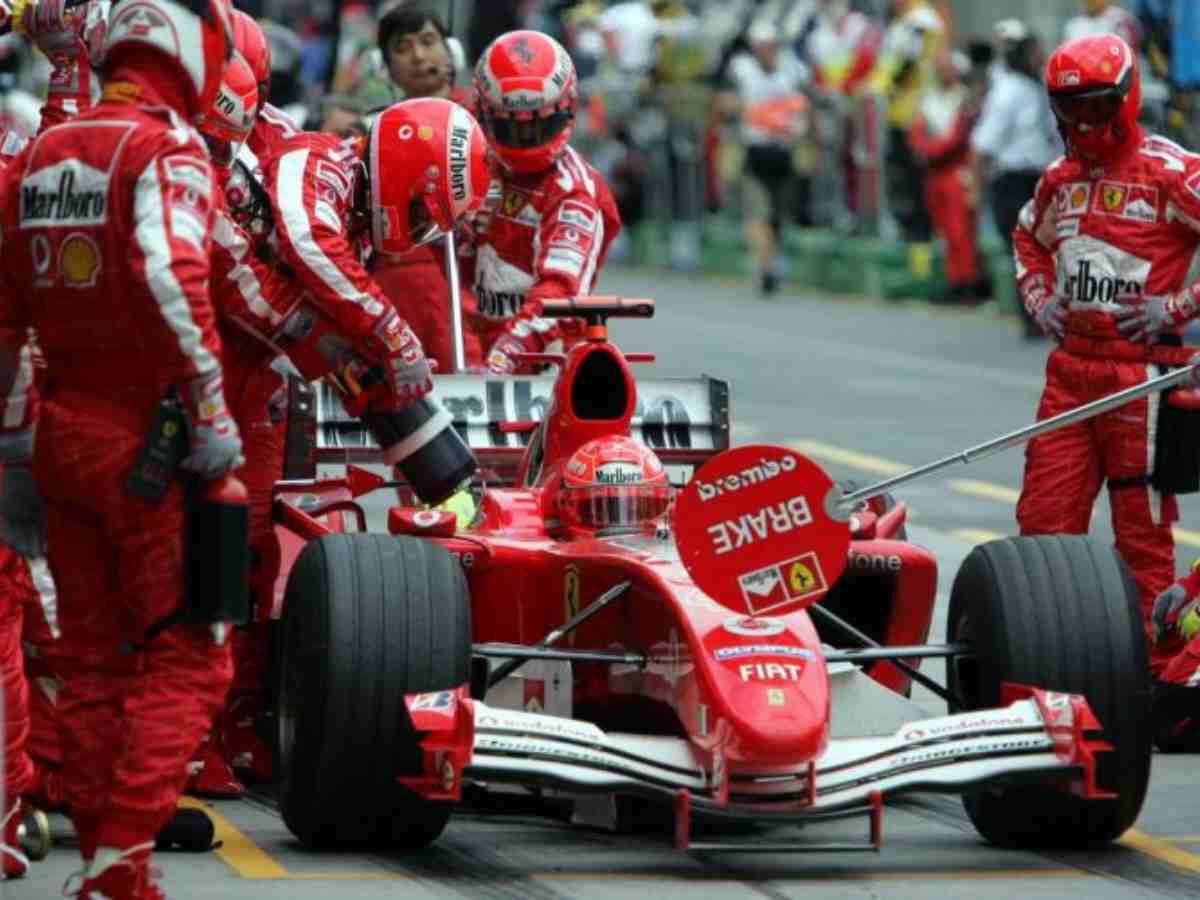
F1 cars in pits for refuelling (Credits: F1i)
🔍 Explore this post with:
For those new to watching Formula One, it may come as a surprise that cars used to be refuelled during the race with a long hose, resulting in longer pit stops compared to the sub-two-second stops currently seen on sport. The 2009 Abu Dhabi saw the last race of an F1 car being fitted with long hoses for refuelling. This era was thrilling, but also hazardous. Let’s delve into why refuelling was banned from F1.
The primary reason for the ban on refuelling is safety. Refuelling during a race is a risky process, with the potential for fuel spills, fires, and explosions. In the past, several incidents have led to injuries or fatalities, making it clear that this practice needed to be eliminated. By removing refuelling from the equation, F1 has become a safer sport for drivers, crew members, and spectators.
In addition to safety concerns, the cost was another key factor in the ban on refuelling. It adds an additional layer of complexity to F1, requiring extra personnel, equipment, and logistical considerations. By getting rid of refuelling, teams can save significant amounts of money that would have been spent on fuel, refuelling equipment, and personnel. This cost-saving measure helps to make the sport more sustainable and financially viable in the long run.
Discover: Who is Jenson Button’s ex-wife Jessica Michibata? Why she was arrested?
For cost benefits
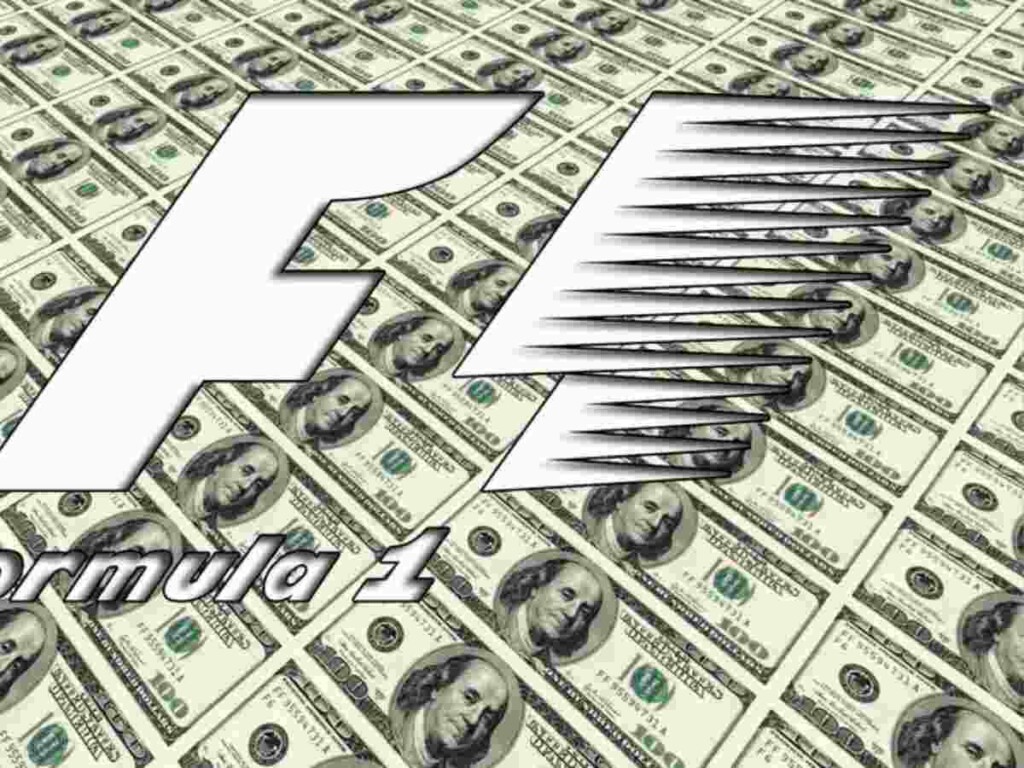
One of the reasons why FIA banned refuelling was to save costs. The high cost of transporting specialized nimble refuelling rigs to the races was the second reason for the refuelling prohibition. The expense of the refuelling apparatus was enormous, and it was eliminated by getting rid of it. Similarly, by limiting the maximum permissible weight during a race to 110 kg, fuel usage was limited. While cost saving was one of the reasons, the prime reason was to enhance safety.
In today’s era, where FIA is very strict on making racing affordable for low-budget teams, refuelling would not be encouraged by the teams as the teams would prefer spending their resources on upgrades for their cars rather than refuelling equipment and the personnel for the task.
Accidents in Formula One due to refueling
Jos Verstappen on fire, 1994
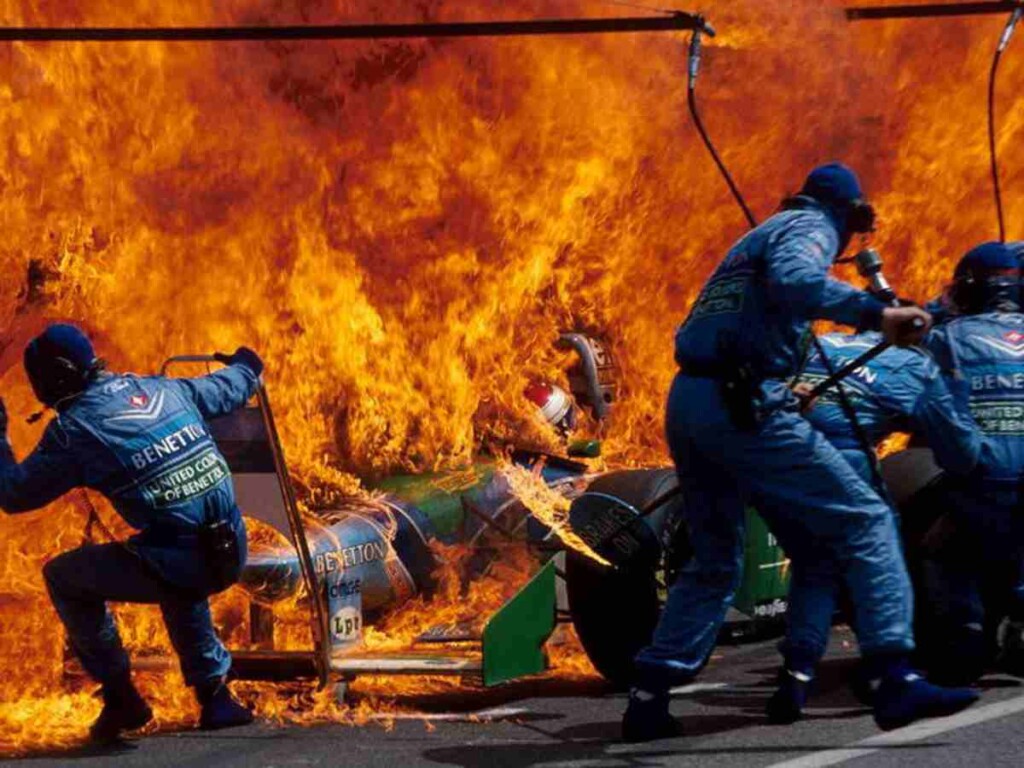
The German Grand Prix saw Jos Verstappen, father of the reigning champion Max Verstappen, encounter one of the most spine-chilling moments in F1 history. During his initial pitstop, a fuel spill occurred, leading to a catastrophic chain of events. As fuel sprayed onto the vehicle from a severed fuel hose, the car went up in flames with Verstappen still in the cockpit. For several heart-wrenching seconds, the driver remained trapped inside the blazing inferno while the pit crew frantically tried to douse the flames.
Fortunately, Verstappen had lifted his helmet visor slightly during the pitstop, allowing him to breathe and avoid more severe injuries. Although he sustained minor burns to his nose, the incident exposed the dangers of refueling during races. To improve safety, F1 authorities made several changes, including modifying the gasoline supply pipe by adding a fail-safe cut-out device. This cut-out device acts as a failsafe mechanism, shutting off fuel flow in case of any leaks during refueling. As a result, the risk of fires and explosions has been significantly reduced, ensuring a safer environment for drivers, pit crew members, and spectators.
Eddie Irvine heats up, 1995
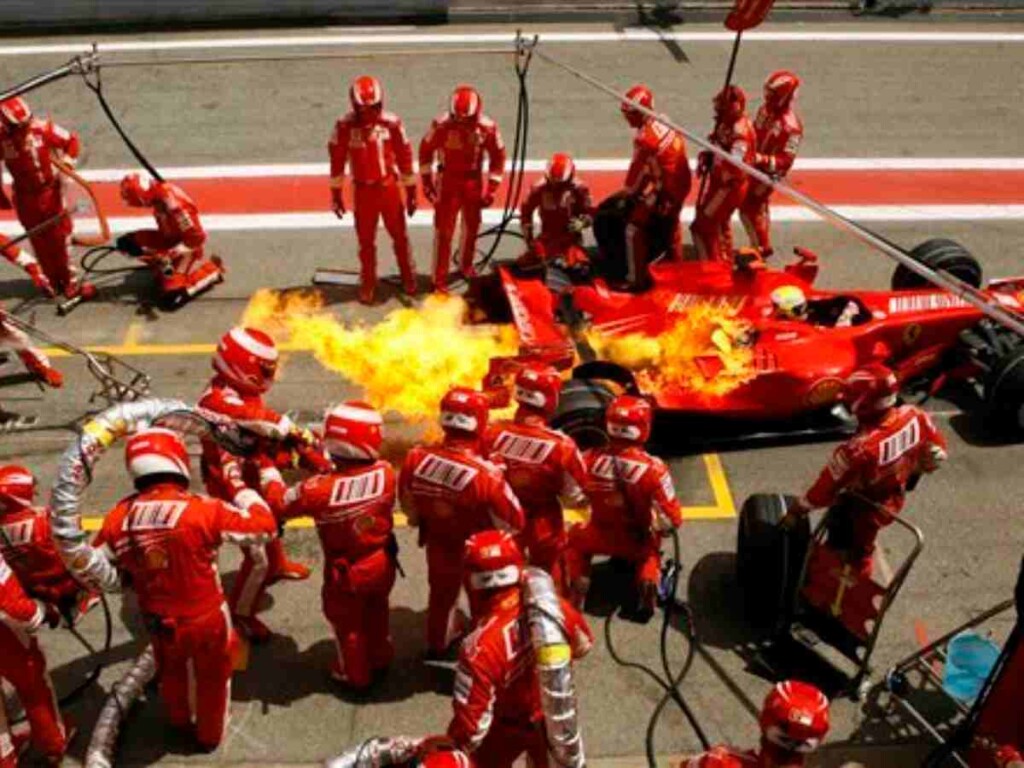
During the 1995 Belgian GP, Eddie Irvine was perilously close to a major refueling mishap. As he pulled in for his stop on Lap 21, the pit crew completed the refueling operation in the nick of time. However, as Irvine attempted to exit the box, his fuel valve malfunctioned, and the car was engulfed in flames during a pitstop as the fuel valve became jammed open.
Thankfully, the crew was quick to respond, and within six seconds, the situation was under control. Irvine was lucky to escape the incident with only minor injuries, and he remained mostly unfazed by the ordeal. Nevertheless, Although the Northern Irishman was unharmed, he was forced to withdraw from the race, highlighting the dangers of refueling in Formula 1 again.
Kimi Raikkonen and the fire, 2009
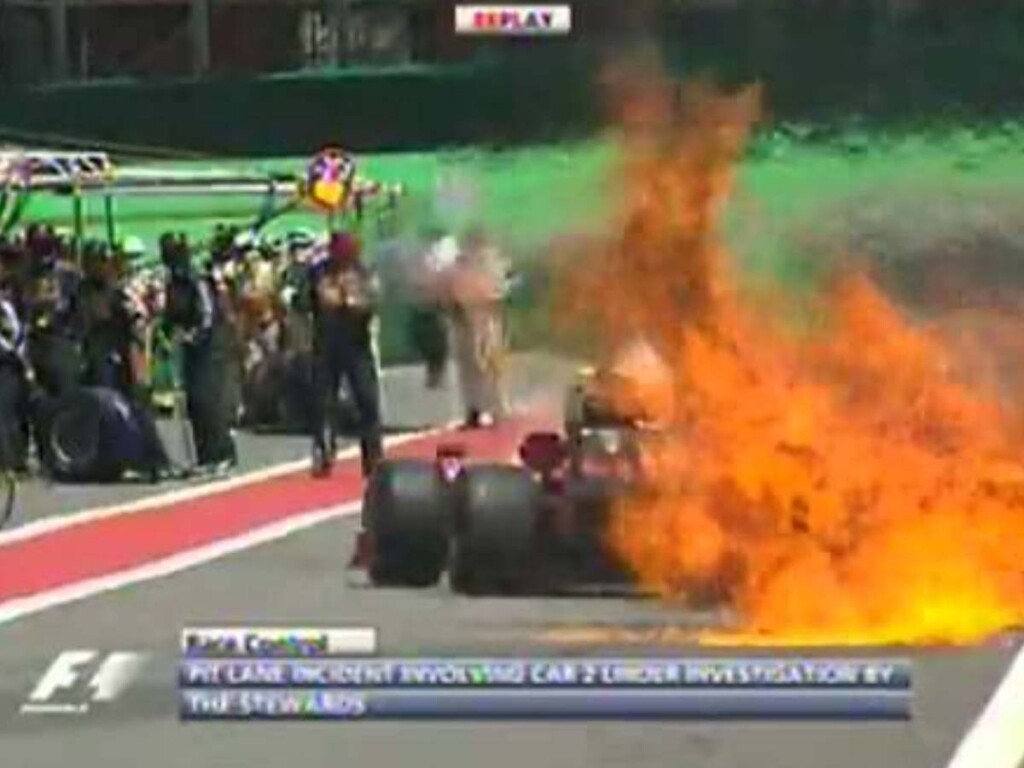
The Brazilian Grand Prix in 2009 was a nightmare for Kimi Raikkonen and his Ferrari team. A pit lane incident involving McLaren’s Heikki Kovalainen resulted in gasoline splashing the Finnish driver’s car. In a terrifying instant, Raikkonen’s visor was covered in a mist of fuel, which instantly caught fire upon contact with the hot exhaust. Thankfully, the Ferrari driver escaped with only sore eyes and no serious injuries and went on to win the race despite being set ablaze.
The incident itself led to a 25-second penalty being imposed on Kovalainen for his unsafe release, which resulted in him trailing the fuel hose behind his car. Additionally, McLaren was fined a hefty $50,000 for the mishap, which not only put their own driver’s safety at risk but also endangered the lives of everyone in the pit lane. The gravity of the situation was further amplified as Raikkonen drove directly into the fire caused by Kovalainen’s recklessness. The situation could have ended disastrously, and it was only due to the swift actions of the pit crew that the fire was quickly extinguished.
The harrowing incidents in F1 involving refuelling led to a paradigm shift in the way teams strategize their races. The teams now prioritise race pace over qualifying speed, as the added weight of a full fuel tank can significantly impact lap times. Furthermore, teams have adopted a more conservative approach to pit stops since they can no longer rely on refuelling to compensate for a lost time.
The evolution of Formula One after refuelling ban
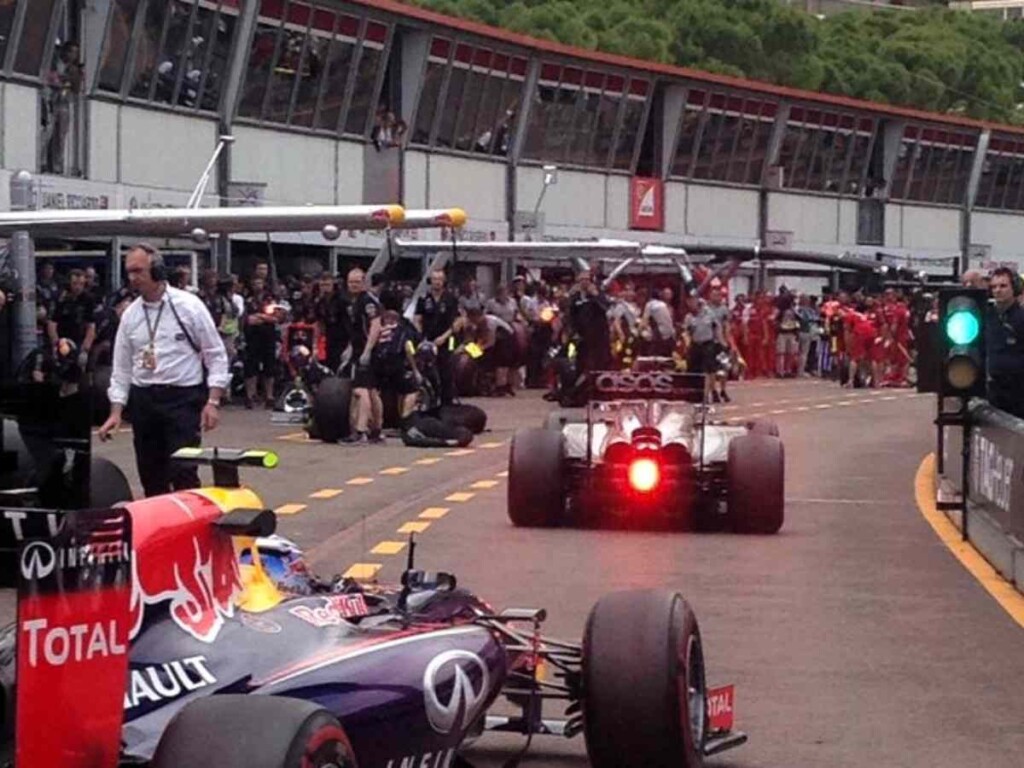
To enhance the sport’s competitiveness and safety, Max Mosely, the then president of FIA, banned refueling in 2010, much to the delight of fans worldwide. This move bore fruit, as the 2010 season witnessed a doubling of overtakes compared to the previous year, with the only significant change being the refueling ban. With tyre stints now being subject to variation, the timing of pit stops has become somewhat unpredictable. During the refueling era, the amount of fuel put into the car could be correlated with the number of laps they could cover before the next stop.
In addition to the benefits of heightened competitiveness and safety, the ban on refueling has had a salubrious effect on the environment. F1 has been criticized for its carbon footprint, with cars burning through hundreds of litres of fuel during a single race. However, the ban on refueling has reduced the overall amount of fuel consumed during a race, thereby lowering the sport’s carbon footprint.
The ban on refuelling in F1 races has certainly had some unintended consequences that have impacted race strategy. One of the most significant impacts has been on race strategy. Prior to the ban, teams had the option to start with a lighter fuel load and refuel during the race to gain a competitive edge. Now, without refuelling, teams must start the race with a full tank of fuel, limiting their strategic options and placing greater emphasis on tire management. In turn, this emphasis on tire management has led to some exciting on-track battles, as drivers fight for position while trying to conserve their tires for the duration of the race.
To mitigate the risks associated with refueling in F1 races, it is necessary to manage the attendant hazards with great care. This includes ensuring that refuelling couplings are properly attached, preventing failures of refuelling couplings under pressure, and minimizing the risk of fire accidents. By banning refueling, F1 has not only made the sport safer but also more environmentally friendly by reducing the amount of fuel consumed during races.
The ban on refuelling in F1 has brought about a substantial transformation in the sport, with its attendant benefits and drawbacks. While it has resulted in some strategic hurdles for teams, it has also assuaged safety concerns, cut costs, and curtailed the sport’s carbon footprint. Despite the challenges, the prohibition of refuelling in F1 races has been a resounding success, achieving its intended objectives. The F1 community continues to evolve and adjust, and the ban on refuelling is a testament to the sport’s unyielding commitment to sustainability and innovation.
In case you missed it:
How did Formula 1 driver Jules Bianchi die?
Why do Formula 1 teams say ‘box’ instead of ‘pit’ to their drivers?







